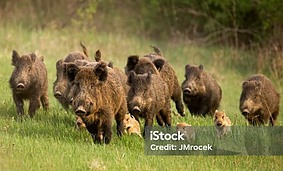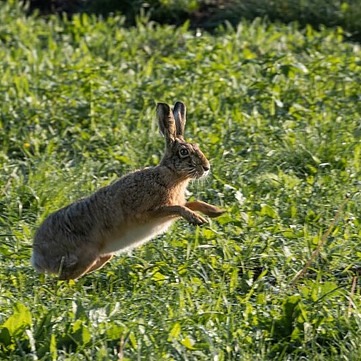Survival Situation
 I’m going to level with you: when thrust into a survival scenario, food isn’t just a source of comfort; it’s your lifeline. Survival situations are a cocktail of uncertainty and stress, where thinking on your feet could mean the difference between life and death. Here, knowing how to sustain yourself becomes critical. If you’re curious about how to procure sustenance in the wild, you’re in the right place.
I’m going to level with you: when thrust into a survival scenario, food isn’t just a source of comfort; it’s your lifeline. Survival situations are a cocktail of uncertainty and stress, where thinking on your feet could mean the difference between life and death. Here, knowing how to sustain yourself becomes critical. If you’re curious about how to procure sustenance in the wild, you’re in the right place.
This isn’t just about finding something to eat; it’s also about doing so safely and sustainably. In my opinion, the skill to find food in the vastness of the wilderness is both an art and a science. I’m here to help you navigate this complex terrain, starting with understanding your surroundings to locating and consuming what nature provides.
You’re going to find out about the essential topics, like discerning which plants and fruits are safe to eat, the basics of hunting and fishing, and even sourcing food from water bodies. Also, I’ll touch on how to maintain a nutritious diet when your kitchen is miles away, and every meal is a question of what you can forage, catch, or collect.
By the end of this article, I really hope that you’ll feel more confident in your ability to find and sustain yourself in the wilderness. And, as a prerequisite to all these strategies, an understanding of your surroundings the green carpet of foliage beneath your feet, the cacophony of insects, and the hidden life in water bodies is fundamental. Let’s explore how to unlock nature’s pantry.
Unlocking Nature’s Bounty: Know Your Environment
I’m going to kick things off by emphasizing the need to get familiar with your surroundings. This isn’t just about recognizing the scenery; it’s about understanding the ecosystem you’re in and how it can provide for you.
You’re going to find out how essential it is to identify what’s safe to eat. Don’t worry too much about memorizing every plant and insect out there. Choose something that resonates with you, like learning the most common edible species or spotting the telltale signs of poisonous plants.
Recognizing safe to eat insects and small animals can be a game changer. While they might not be your first choice, in a survival scenario, these little critters can be rich in protein. Just don’t focus too much on perfection; even experts sometimes have to guess and check.
Energy is everything out here. Being efficient with your time and effort means knowing the indicators of what’s edible and what’s not. In my opinion, a good rule of thumb is to observe what local wildlife is eating. If animals avoid it, you probably should too.
In the next section, we’re going to delve into the details of foraging for edible plants and fruits. Trust me, with a bit of knowledge and a keen eye, the wilderness might just reveal its more generous side. Let’s head into the forager’s playbook and see what nature has in store.
The Forager’s Playbook: Edible Plants and Fruits
video (
You’re going to find out about the art of foraging – it’s an essential skill for survival in the wild. Foraging isn’t just about picking anything green and hoping for the best; it’s a science, an art, and above all, it’s about being smart and safe.
In my opinion, there are few things more rewarding than successfully identifying and harvesting wild plants. This section will teach you methods to safely locate and harvest wild flora. You’ll understand what to look for, and just as importantly, what to avoid. We’ll cover the universal edibility test, which can be a lifesaver when you’re unsure about a plant.
Gathering wild fruits can be less risky than plants, but there are still a few rules to follow to avoid getting sick. For example, steer clear of fruits that are milky when cut, or those that have a bitter almond scent, as these can indicate the presence of harmful substances.
The wild is generous, but remember, foraging should be done with a high degree of care for the environment. Maintaining the integrity and sustainability of the ecosystem is vital. Take only what you need and always ensure the plants can continue to grow and reproduce.
Next up, we’ll explore how you can augment your foraged goods with protein sources through the age old survival techniques of hunting and fishing.
Primitive Pursuits: Hunting and Fishing for Sustenance
I’m here to help you with understanding the ins and outs of securing high protein food in the wilderness through hunting and fishing. It’s not just about snagging a meal; it’s a way to connect deeply with the environment and practice ancient skills. If you’ve found some edible plants and fruits, that’s great, but protein is next on the menu, and I’m going to show you how to get it.
Constructing basic traps and snares can seem daunting at first. However, with a bit of know how, simple snaring becomes second nature. Start with materials around you: bendable branches, twine made from plant fibers, and rocks can be fashioned into rabbit snares or bird traps. You’re going to find out about the ‘deadfall trap,’ a classic that’s easy to set up using weight to your advantage.
In my opinion, fishing can be successfully tackled, even without a fishing rod. I’m talking about improvised tools like a handcrafted spear from a sturdy branch or a makeshift net from available materials. Your first attempt doesn’t need to be perfect; it’s about patience and persistence. Fish are abundant in many survival scenarios, and learning to catch them is a valuable skill.
Butchering and cooking wild game and fish is an essential part of this process. You can always adjust your approach down the road, but start by learning to prepare your catch so it’s safe to eat. Cooking not only makes the meat safer but also easier to digest, preserving its nutritional value and taste. Plus, it can be quite a morale booster to enjoy a well prepared meal under the stars.
Liquid Nourishment: Water Bodies as Food Sources
I’m going to reveal a less conventional, yet equally vital, source of sustenance you may find in the wild water bodies. Now, you might be thinking of water purely as a drink, but it’s so much more. Water bodies can be teeming with food options if you know where to look and what to collect.
Choosing something that resonates with you when it comes to nutrition is important, but in a survival situation, adaptability is key. This includes looking beneath the surface literally. Edible aquatic plants such as cattails and water lilies not only provide essential vitamins and minerals, but they also offer a surprising amount of calories. Assertion of caution: always ensure the plants are harvested from clean, unpolluted waters to avoid contaminants.
Moving to the aquatic creatures, freshwater mollusks and crustaceans, like snails and crawfish, are often found in streams and lakes. With minimal equipment, they can be gathered and make for a valuable protein source. Don’t overlook these small but dense pockets of nutrition; they can be a game changer when calories are in high demand.
However, there’s a caution I need to impress upon you: avoid contaminated water sources at all costs. Water from stagnant ponds, areas with heavy agricultural runoff, or industrial pollution is often unsafe not just to drink, but also as a home for what might seem like edible fauna. Your health in survival situations is precarious, and the wrong food source can tip the scales against you quickly.
As we move into discussing energy and calorie requirements in a survival situation, it’s clear that being prudent with what nature offers can make a significant difference. So when you venture next into the wilderness, remember to keep a vigilant eye on those water bodies they might just be the oasis you need.
Strategic Survival Nutrition: Balancing Needs and Resources
I’m going to break down the balancing act of meeting your nutritional needs with what you’ve got at hand in a survival situation. Think of this as managing a budget, but instead of dollars, you’re working with calories and nutrients. In the wilderness, every calorie counts, and energy is currency.
You can always adjust your approach down the road, but your initial focus should be on finding food that provides the most bang for your buck, so to speak. High energy foods like nuts, seeds, and certain fish are like hitting a jackpot in terms of calorie density. They’re going to keep you going longer on less.
Don’t worry too much about having a state of the art kitchen. I’m here to help you with some clever food preservation techniques. Smoking fish over a fire or drying fruits and herbs in the sun isn’t just about making your food last longer; it’s also about ensuring you have nutrition on tap, even when the going gets tough.
Choose something that resonates with you from what’s available. Focusing on variety is crucial as well. You might find berries bursting with vitamin C or leafy greens rich in minerals these can be game changers for maintaining a semblance of a balanced diet, even when your options are limited.
That’s the strategy I like to leverage: combining high energy foods with nutrient-dense options to create a survival menu that’s both sustaining and balanced. Your first attempt doesn’t need to be your last. Trial and error are part of wilderness living; remember, adaptability is your greatest asset.
Conclusion: Becoming Your Own Survival Food Expert
So, you’ve made it through the wilderness of information on how to find and sustain yourself with food in a survival situation. This isn’t just about identifying berries or setting up a fishing line; it’s about fostering resilience and confidence in your abilities to adapt when faced with the unexpected.
You’re going to find out about all the practical advice and strategies discussed, from understanding your surroundings and foraging to fishing and staying hydrated. And remember, your first attempt doesn’t need to be perfect. You can always fine tune your survival skills as you gain more experience in the wild.
Adaptability and resourcefulness can’t be overstated; they are the cornerstones of surviving in the wild. Choosing something that resonates with you, be it foraging, hunting, or fishing, can shape your approach and increase your chances of making it through tough times.
I really hope that you never find yourself in a dire survival scenario. But if you do, the knowledge you’ve acquired here will be a vital asset. It’s more than just a set of instructions; it’s a mindset geared towards overcoming the odds.
While we’re wrapping up this wilderness journey, let’s shift gears and talk about another kind of survival the digital world. Specifically, how Wealthy Affiliate and Jaxxy ( can feed your online ventures and set you up for success.
Empowering Your Online Business with Wealthy Affiliate
I’m going to introduce you to a haven for budding entrepreneurs: Wealthy Affiliate. ( It’s a one-stop-shop for learning affiliate marketing, the kind that turns novices into pros. This isn’t just about learning the ropes; it’s also about applying them in the real world.
In my opinion, the most empowering aspect of Wealthy Affiliate is the community. You’re going to find out about the support system that consists of experienced marketers who make navigating the complex world of online business a breeze. It’s a network where questions are encouraged and answers are freely shared.
If you want to build a website with minimal hassle, Wealthy Affiliate‘s suite of tools is designed to help you do just that. With robust website building tools that are both powerful and user friendly, you can roll out a professional looking site faster than you’d think.
I’m here to help you understand how Wealthy Affiliate can serve as your personal toolkit for online success. We’re talking training programs, live classes, and resources that span from SEO strategies to monetization methods. Choose something that resonates with you, and Wealthy Affiliate likely has the resources to support it.
So my question to you today is, are you ready to unlock the full potential of your online business with Wealthy Affiliate?
Conclusion: From Wilderness Wisdom to Online Mastery
You can use the concepts of adaptability and resourcefulness honed in the wilderness to navigate your online pursuits. Just as with identifying natural foods, recognizing the right tools and communities can significantly affect your success.
Whether you’re foraging for food in dense forests or forging a path in the digital marketplace, the principles are echoed across both landscapes. Wealthy Affiliate (and Jaxxy aren’t just platforms; they are part of your survival kit in the entrepreneurial wilderness.
Your journey through understanding survival foods ends here, but your adventure in applying these skills to other areas of life, including online business, is just beginning. Take the resilience, patience, and strategies you’ve learned about sourcing food in the wild, and translate them into growing and sustaining your business adventure.
Remember, just like in the wild, your first attempt at finding success online doesn’t need to be perfect. Use what you’ve learned, adapt as you go, and always keep moving forward. The wilderness and the web both offer vast opportunities for growth and learning. To find out more about Wealthy Affiliate and Jaxxy, ( take that first step, and see where the path leads!
Last Word
Whether you’re foraging for food in dense forests or forging a path in the digital marketplace, the principles are echoed across both landscapes. Wealthy Affiliate and Jaxxy aren’t just platforms; they are part of your survival kit in the entrepreneurial wilderness.
 This is “The Old Airman”, Laurence Guidry coming to you from deep in the Heart of the Ozarks Mountains in Beautiful southwest Missouri saying, Stay Safe, Be Aware, Be Alert, and Always Be Prepared!!!!!!!
This is “The Old Airman”, Laurence Guidry coming to you from deep in the Heart of the Ozarks Mountains in Beautiful southwest Missouri saying, Stay Safe, Be Aware, Be Alert, and Always Be Prepared!!!!!!!
MAY OUR GOD CONTINUE TO PROTECT AND BLESS US ALL!!!!!!!

